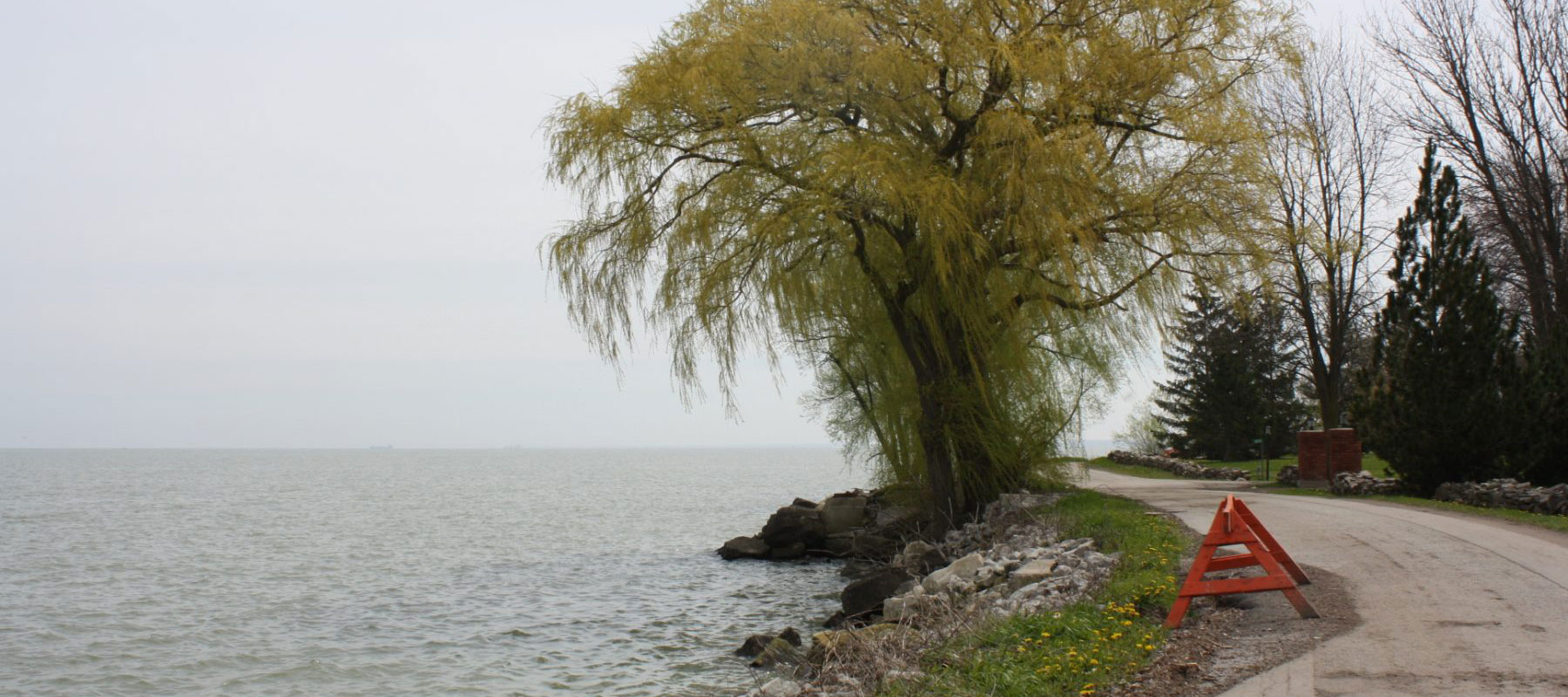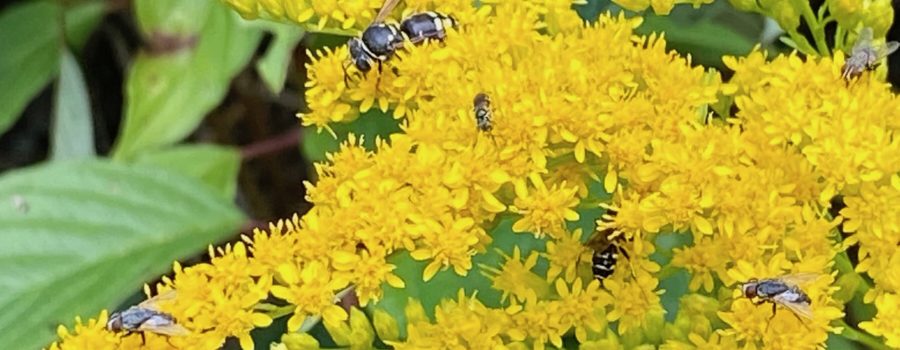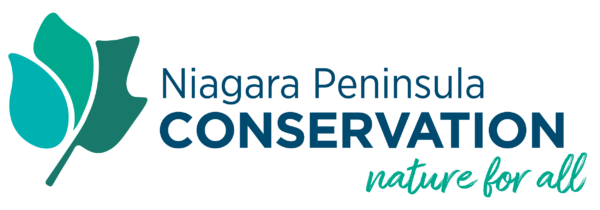The Niagara Region supports a greater number of species than any other ecosystem in Canada.With approximately 2,200 species of of plants (flora) and animals (fauna), Niagara is also one of the most ecologically diverse ecosystems (life zones) in all of North America. The climate in the Niagara Region is moderated by Lake Ontario, Lake Erie and the Niagara Escarpment. All three geologic features work together to create a localized micro-climate characterized by warm spring and fall seasons with milder winters (as compared to other parts of southern Ontario). They combine to create rich mineral soils where rare and unique ecological communities thrive, especially the ones so many of our pollinators depend upon.
A great time to observe the local flora and fauna Niagara has to offer is late summer and early fall, while plants and animals heighten their preparations for migration or overwintering. Goldenrod and aster are two important plants that provide essential food for a host of animals, including birds, butterflies and other insects such as bees (both native and honey bees). Early goldenrod starts flowering in Niagara in early to mid-August and can be recognized by its deep golden yellow pollen-laden stems. Other varieties of goldenrod soon follow, with asters flowering in late August. They can be recognized by their purple and deep pink daisy-like flowers, although some are also white. In Ontario, there are over 30 species of goldenrod and 34 species of asters. Most flower well into late October, thus surpassing almost all other flowering plants which have gone dormant for winter by then. As late fall bloomers, goldenrods and asters are critically important food sources for many species of animals incuding insects, birds and butterflies.
Animals — including our important pollinators like insects, bees, butterflies— are just like humans in that they require a healthy diet to thrive and survive. The honey bee, for example, requires the nectar (carbohydrates) found in flowers to provide the liquid necessary to create honey. They also require pollen (protein) from flowers to create “beebread”: a mixture of pollen and nectar that is an important food source for newly emerging young bees. In fact, honey bees require 11 different types of protein to complete all of their life-cycle functions. This calls for a diversity of plants with varied flowering times (from April to early November) to provide a rich source of pollen and nectar for optimum health. Similar to the honey bee, many other animals also have complicated nutritional requirements. Considering that habitat loss and degradation are recognized as the single greatest threat to plants and animals (and therefore biodiversity) in Canada, consider what this means for Niagara.
Sadly, we are losing our natural areas that are critically important to a large range of wildlife species. The good news is, many restoration efforts continue to take place by local conservation groups and private landowners. If every landowner in Niagara created or protected a small natural area on their property, these small changes would significantly add up to make a big difference in protecting the environment by reducing pollution, mitigating climate change by promoting carbon storage, and providing food to our much-needed pollinators.
There are many groups and resources available to help get you started, from providing advice on how to mow your grass less so the area can naturally regenerate and provide important nectar for pollinators, to more complex projects such as wetland creation. A great first step is to contact your local Conservation Authority https://npca.ca/restoration or Restoration Council http://niagararestoration.org/.
Photo Caption: Early goldenrod is an important food source for many native pollinators, and is often blamed for allergies. But, goldenrod pollen is not airborne; the culprit is most likely ragweed (a similar looking plant with airborne pollen that is a known allergen).
MEOPAR-Lincoln Community Sustainability Project

ABOUT THE PROJECT
The MEOPAR-Town of Lincoln Research Community Sustainability Project officially launched on Thursday, Nov. 29.
The three-year project between Brock University and the Town of Lincoln is aimed at helping the community understand how to deal with the impacts of climate and environmental changes and examining potential avenues of solutions for future development along the shore. It follows on the heals of the Brock-Lincoln Living Lab partnership announced in October 2017.
Liette Vasseur is leading the study for the Ontario component of a larger project by Université du Québec à Rimouski, which is examining how various coastal communities can deal with and share ideas on the impacts of climate and environmental changes.
The project has received $280,000 in funding from the Marine Environmental Observation Prediction and Response Network (MEOPAR), with additional support from the Town of Lincoln and Brock. MEOPAR is an independent, not-for-profit organization funded by the federal government as a National Centre of Excellence that supports research and trains students in the area of marine risk and resilience.
Lincoln suffered around $1 million in damage as a result of back-to-back spring storms in 2017 that caused massive flooding from Lake Ontario. The storms led to the Town’s first-ever voluntary evacuation notice for residents living near the Lake Ontario shoreline, and caused significant damage to Charles Daley Park and sewer systems in Jordan Station and Campden.
Vasseur said climate change scenarios over the next decade are projecting continuous sea level rise and increases in extreme weather events. This will amplify the severity and frequency of flooding in coastal communities like Lincoln, which is continually growing with more people living near the Lake Ontario waterfront. For the Town of Lincoln, the research will provide crucial information about current and future risks.




















